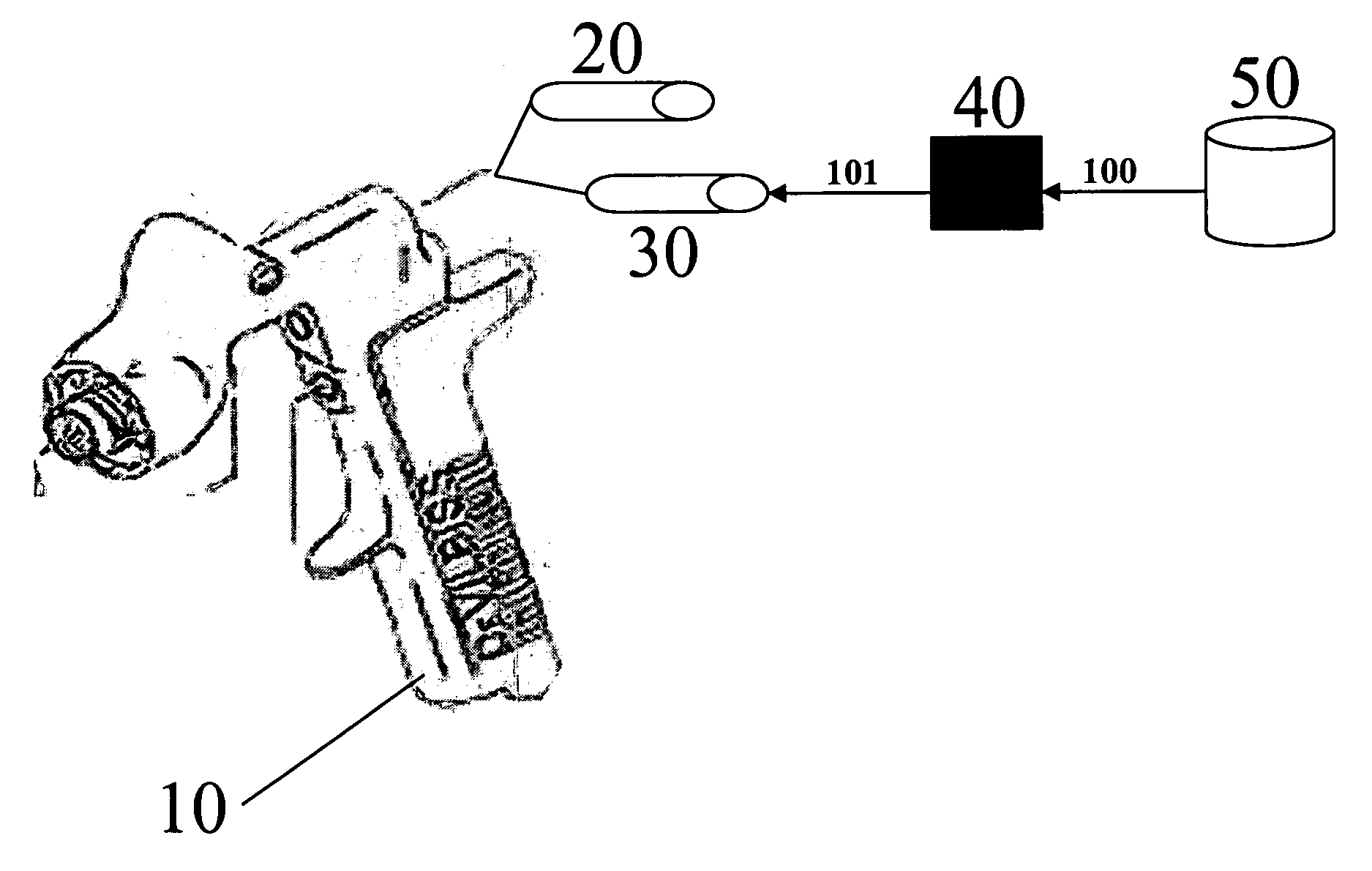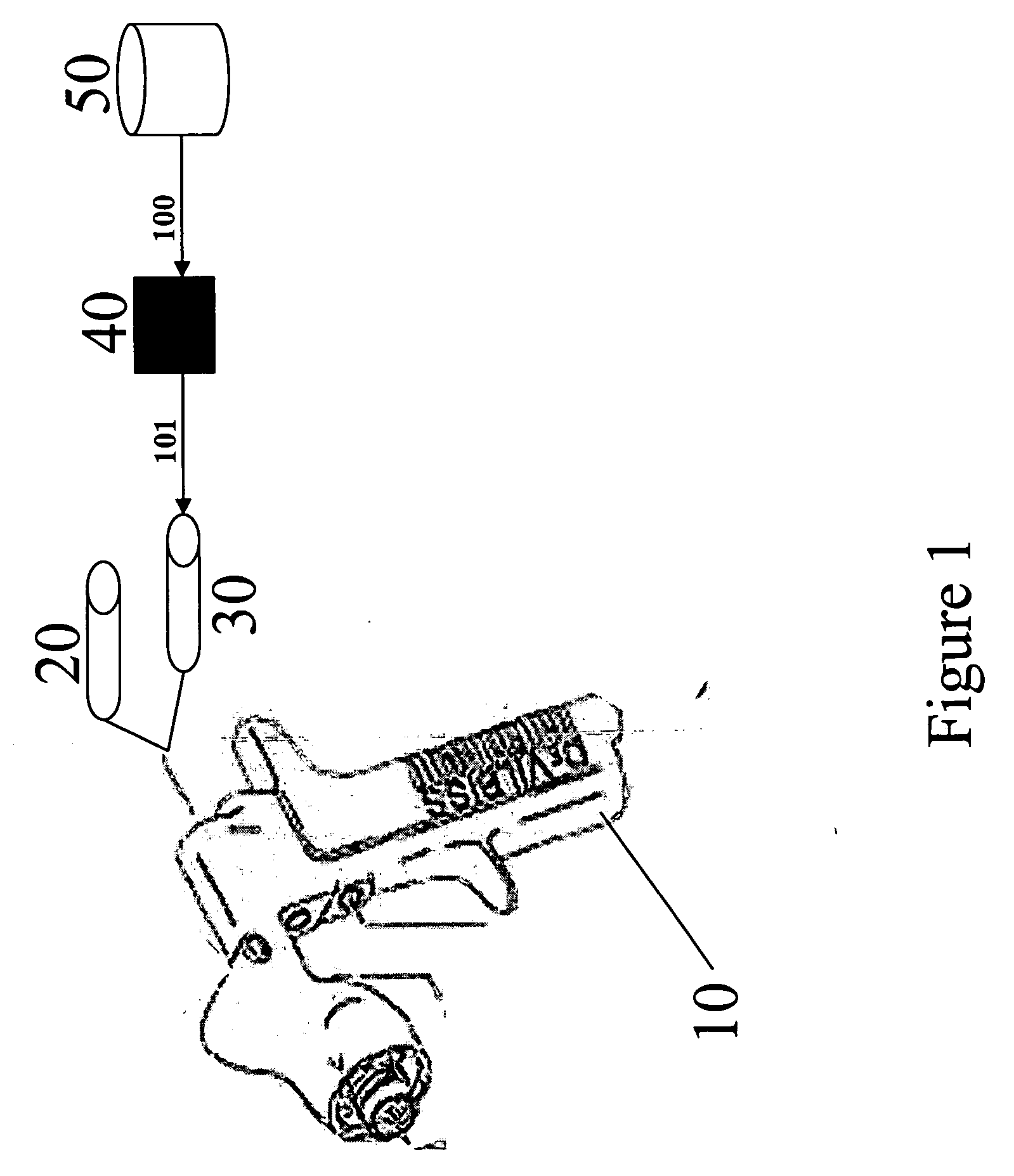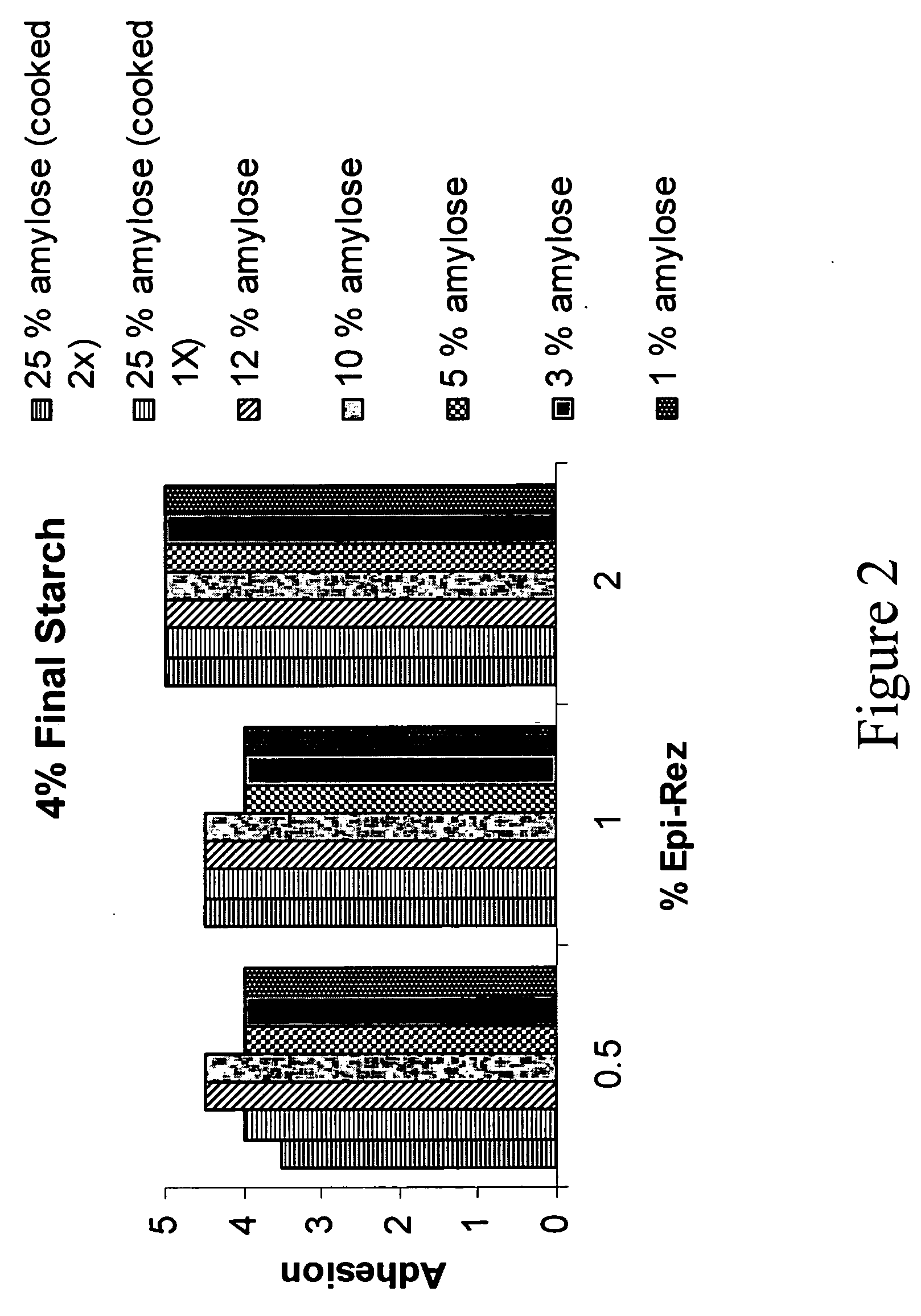Polysaccharide based hydrophilic coatings
a polysaccharide and hydrophilic coating technology, applied in the direction of hemicellulose coatings, superimposed coating processes, liquid/solution decomposition chemical coatings, etc., can solve the problems of limiting utility, exhibiting undesirable surface properties, and surface coatings with poor adhesion and durability
- Summary
- Abstract
- Description
- Claims
- Application Information
AI Technical Summary
Problems solved by technology
Method used
Image
Examples
example 1
[0042] Starch slurries were prepared by jet cooking 700 g of waxy corn starch in 3500 ml of water at 140° C. and 40 psig at a rate of 1 liter / minute in a Penick and Ford Laboratory Model Steam Jet Cooker. Referring to Table III, an HC was prepared by mixing the indicated amounts of reagents. The final starch concentration was 6% w / v. All percentages in the examples are of final w / v unless otherwise indicated.
[0043] The HC was stirred for 30 minutes and the viscosity of the HC measured by a Brookfield Viscometer Model LV at 60 RPM. The HC was fed to a pneumatic sprayer (EGA Manual Touch-Up Gun), which was used to coat a plastic surface. During application of the coating, a hot air gun set on the highest setting was aimed at the pneumatic sprayer. The HC dried upon contacting the plastic surface.
TABLE IIIFormulation for Starch Adhesive coatingReagent*Grams% w / v**JCW Starch (13.1%)45.86.0Aquabead 270E (40%)3.01.2EPI-REZ Resin 3510-W-603.22.0(62%)Zonyl FSA (25%)1.00.25Water47balance
*...
example 2
[0045] Starch slurries were prepared, viscosity measured and the formulations applied to a substrate as described in Example 1. The formulation was used to coat a 6″×6″ polyethylene surface with up to 24 layers and the adhesion of the coating determined in accordance with ASTM D 3359-02. Referring to Table V, an HC was prepared by mixing the indicated amounts of reagents. In the presence of all of the indicated reagents, 6.0% starch, 2.0% EPI-REZ Resin 3510-W-60, 1.2% Aquabead 270E and 0.25% Zonyl FSA, the formulation has an adhesion of almost 5A. Table V presents the adhesion values in the absence of the indicated reagent with all other reagents remaining the same.
TABLE VAdhesion inthe absence ofReagent / (Original concentration w / v)*% w / v**the reagentJCW Starch (13.1%)6.00EPI-REZ Resin 3510-W-60 (62%)2.00Zonyl FSA (25%)0.252A
*In parentheses is given the initial w / v of each reagent.
**% w / v refers to the final % w / v in the HC.
These results demonstrate the relative contribution of...
example 3
[0046] Starch slurries were prepared, viscosity measured and the formulations applied to the substrate as described in Example 1. In the presence of 6.0% starch, 2.0% EPI-REZ Resin 3510-W-60, 1.2% Aquabead 270E and 0.25% Zonyl FSA, the formulation has an adhesion of almost 5A. Reagents in the formulation were substituted as indicated in Table VI with the remainder of the formulation staying the same. The formulation was used to coat a polyethylene surface and the adhesion of the coating determined in accordance with ASTM D 3359-02
TABLE VIEffect of Alternative Reagents on AdhesionForReplaced withAdhesionPlasticizersAquabead 270ENo plasticizerAlmost 5AGlycerolAlmost 5APropylene glycolAlmost 5AAdhesion PromotersEPI-REZ ResinEpirez 3515-w-604A3510-W-60Ancarez AR 5502ARovene40092A40192AMacecote 149-43-11A-2ADoresco ACW 8-62ASurelease E-7-190102AJonacryl 19871APVA-4051APVP K-301ALupasol PS0AAirflex 45301AFlexbond 8252AAirflex 4651ASilres MP 42E-A1APoly(ethylene oxide) Mw 100,0000APoly(a...
PUM
| Property | Measurement | Unit |
|---|---|---|
| Fraction | aaaaa | aaaaa |
| Fraction | aaaaa | aaaaa |
| Fraction | aaaaa | aaaaa |
Abstract
Description
Claims
Application Information
 Login to View More
Login to View More - R&D
- Intellectual Property
- Life Sciences
- Materials
- Tech Scout
- Unparalleled Data Quality
- Higher Quality Content
- 60% Fewer Hallucinations
Browse by: Latest US Patents, China's latest patents, Technical Efficacy Thesaurus, Application Domain, Technology Topic, Popular Technical Reports.
© 2025 PatSnap. All rights reserved.Legal|Privacy policy|Modern Slavery Act Transparency Statement|Sitemap|About US| Contact US: help@patsnap.com



